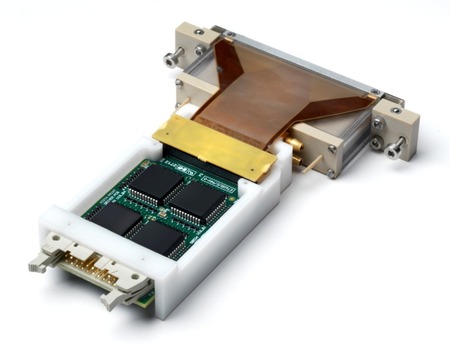Perhaps the most significant technology barrier in 3D printing today is the limitation of materials. Most 3D printers can produce only a single material at a time. Some manufacturers have short-circuited this problem slightly by adding additional print heads to enable more than one material, and only one (Stratasys) has the technology to mix (only two) different materials in a single print job.
But that may change with the announcement by TTP of Cambridge UK of their new Vista 3D print head technology. The Vista 3D is said to be the first 3D print solution that “can print with more than one material”. We take that to mean “different materials shoot down the same pipes.” If true, this would be an earthshaking development.
TTP says the Vista 3D is able to print “ceramics, and even biological cells, as well as the traditional metals and plastics” by using a newly developed “method in droplet ejection”. They say:
Vista 3D print heads can print both organic and inorganic materials including ceramics, biological cells, enzymes, metals, plastics and a broad range of other chemical materials.
We do not have much in the way of technical specifications for this technology, as it is not a printer; it’s more of a design. However, the technology can print 0.050mm particles as well as viscous fluids of almost any sort. One can imagine the number of possible materials if it is simply solid particles embedded in a binder fluid. There are many types of particles.
However, this is only a print head. It’s NOT a 3D printer. We expect quite a bit of work is yet required to integrate this technology into a working, reliable 3D printer. There will be challenges in developing fluid materials that can be commercially viable and successfully stored and delivered to the printhead. There will be legal challenges – perhaps from competing patents and certainly work required to negotiate deals with 3D printer manufacturers wishing to use Vista 3D.
Once those challenges have been overcome, we expect to finally see entirely new styles of 3D printers; machines that can truly print complex objects with multiple materials.
Via TTP (PDF)


